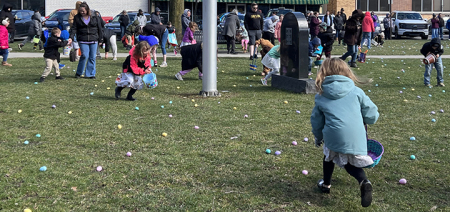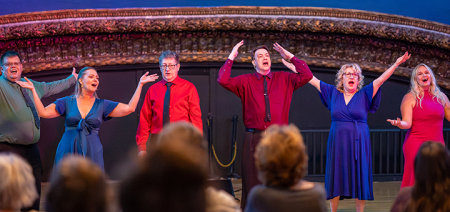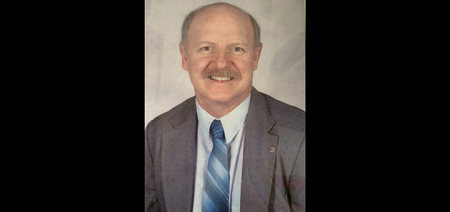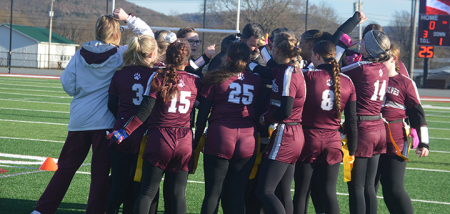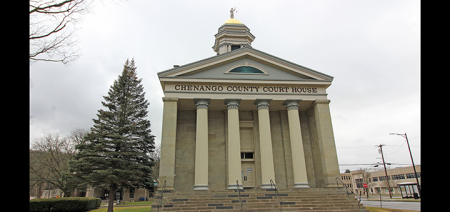Motorcycle Safety Reminders Stir Memories Of Accident
Published:
April 20th, 2010
By:
Tyler Murphy

NORWICH – As the warm spring weather entices residents to transition from their winter living rooms to engaging in outdoor activities, drivers will again see their highways becoming populated with motorcycle enthusiasts.
According to local law enforcement and safety officials, this transitioning period can be the most dangerous time of the year for riders who are dusting off their helmets and getting eagerly reacquainted with their hibernating motorcycle skills.
At the same time other drivers behind the wheel have to adjust to the seasonal appearance of motorcycles, they are more often than not the ones responsible for a collision between the two, according to the New York State Governor’s Traffic Safety Committee and the Department of Motor Vehicles.
“Most crashes between cars and motorcycles involve turning left. If you are preparing to cross traffic or turn left, take a second look to make sure it is safe to proceed,” state the agencies on their web site, www.nysgtsc.state.ny.us.
Drawing from his law enforcement experience at local accident scenes and being a licensed motorcycle rider himself for more than three decades, Norwich Police Chief Joseph Angelino says he agrees.
“I don’t even know how many people have said they didn’t see them,” said Angelino, referring to car and truck drivers at a motorcycle accident.
“People pull up to a intersection and they look for, and expect, to see if a car or truck is coming and if they see a motorcycle, they pull out. People just aren’t used to looking for them; it’s an instinct.”
Angelino said the city had on average three to four accidents a year, most of those taking place at intersections. In 2009, the only recorded fatal accident in the city limits was a motorcycle accident.
Chenango County Sheriff Lt. Richard Cobb is the office’s sole certified Accident Scene Reconstruction Technician.
“People need to understand that a motorcycle is a very different kind of machine than other vehicles on the road. That seems obvious, but when people are driving they expect them to act the same as a car and they don’t. They’re lighter, faster, turn differently and have fewer wheels on the road’s surface. This means they have different stopping and acceleration times for example,” he said.
“The biggest problem is people just don’t seem to see them. They look up and see the SUV driving right in front of a motorcycle, they see the pick-up behind it but they won’t look carefully to see the motorcycle rider in between. Where at a glance they’d see the car behind that SUV, they might not see a motorcycle. You have to look for them.”
Ask Sherburne-Earlville High School Principal Keith Reed Jr. That’s exactly what happened to him.
On the clear sunny day of Aug. 22, 2008, Reed was traveling south on his 2005 Yamaha motorcycle along state Rt. 12 in Oxford at around 3:30 p.m. to visit his parents, who live in Salamanca.
At the same time, Randy Cooper was heading to Norwich from his Oxford home on Georgetown Road (County Rt. 4) in his friend’s F-150 pick-up truck. While at the intersection of Rt. 12 and Georgetown, Cooper waited for the passing traffic to clear so he could turn left onto Rt. 12.
“I remember there was a person in front of me who was turning right onto Randy’s road as he was waiting to pull out. I think maybe he was focused on that and didn’t see me behind,” said Reed.
“I was driving south on Route 12 and I’m not sure what happened I tried to veer to the left, I thought he’d see me, apparently he didn’t and caught me on the right side,” said Reed.
Cooper also recalled the accident. “Well, I was just getting ready to go the bank in Norwich. I borrowed a friend’s truck for a about a week, because mine had broken down.”
“I look toward Norwich, north, didn’t see him. I looked down south and didn’t see anything coming. He must have been in a blind spot, traveling along the guide wire or the tall grass. I just never saw him until he was about to hit the truck right in front of me,” said Cooper.
The bike struck the truck’s front tire and bumper and Reed was ejected, striking the truck with his body before being thrown from the impact. Both vehicles then burst into flames. At the time, Reed said he had no idea how extensive his injuries were.
“I had a page and a half of broken bones. My right leg broke in five places; my femoral artery was cut.”
“I blew out my left eye socket, my nose was basically gone and I had a broken jaw. Miraculously, I had no spinal cord injury or brain damage though – at least none I didn’t have before the accident,” joked Reed as he recalled the incident recently.
Reed was transported to Wilson Regional Medical Center in Johnson City by ambulance because the emergency helicopter was not readily available. After arriving, doctors put him into an induced coma that was supposed to last 10 days – but he wouldn’t wake up for more than four weeks.
Reed said during his stay in the intensive care unit, he flatlined nine times. He’s had 20 surgeries since the accident and countless hours of physical therapy. In September 2009, he was finally able to return to work full time.
“I remember the impact. I remember laying there, waking up and a lady behind me was telling me I would be all right. I remember being in the ambulance and listening to the radio and hearing about the injuries. I thought they were talking about the other driver, I thought he was going to die, but they were actually talking about me.”
“It was one of the worst things I ever went through. It hurt me, not physically, but mentally more than anything in my life,” recalled Cooper last week. He also said he was later ticketed by state police for failing to yield the right of way.
“It’s something I really regret. He (Reed) came down one day, afterwards, and told me no hard feelings. He went to shake my hand and I gave him a hug.”
Reed says he holds no hard feelings for Cooper and says the incident was an accident.
“A lot of good has come out of this accident – more good than bad,” said Reed. “I had two seconds to think about it that day before it happened; after that kind of accident, you do a lot of soul searching.”
Reed added that the outpouring of concern and compassion he recieved from loved ones and the community was inspiring. “I just can’t thank everyone enough,” he said.
“I’m a different person than I was before. You gain a new life appreciation. Something like this can hurt and it changes you. You can focus on the pain every day or let it remind you that you made it,” said Reed, who has not ridden a motorcycle since.
Cooper too says the day changed him forever. “Now it takes a lot of time before I make a turn to go anywhere. People should always be on the lookout because it only takes a second for something to happen.”
Safety Tips from the New York State Department of Motor vehicles for bikers.
• Always wear an approved helmet and eye protection. Helmets are required by law in New York State.
• Always wear high quality riding gear designed to protect the rider during a fall. This includes over the ankle boots, full finger gloves with padding in addition to jackets and pants with armor protection at impact points.
• Wear high visibility vests, garments with reflectorized features and accessories to boost your visibility to other drivers.
• Maintain your motorcycle properly. Insure all your lights and horn are working and both mirrors are adjusted. Make sure your tires are properly inflated and have legal tread depth.
• Maintain a high level of awareness. Scan the roadway constantly for dangers and ride alert.
• Never drink alcohol and ride a motorcycle.
• Allow adequate space between you and the vehicle in front of you. Use the “two second” rule as a safety zone.
• Let other motorists know your intentions. Signal when you turn with your directional lights or hand signals. Also, flashing your brake light periodically before you stop will alert drivers behind you to be cautious.
Author: Tyler Murphy - More From This Author
Comments
